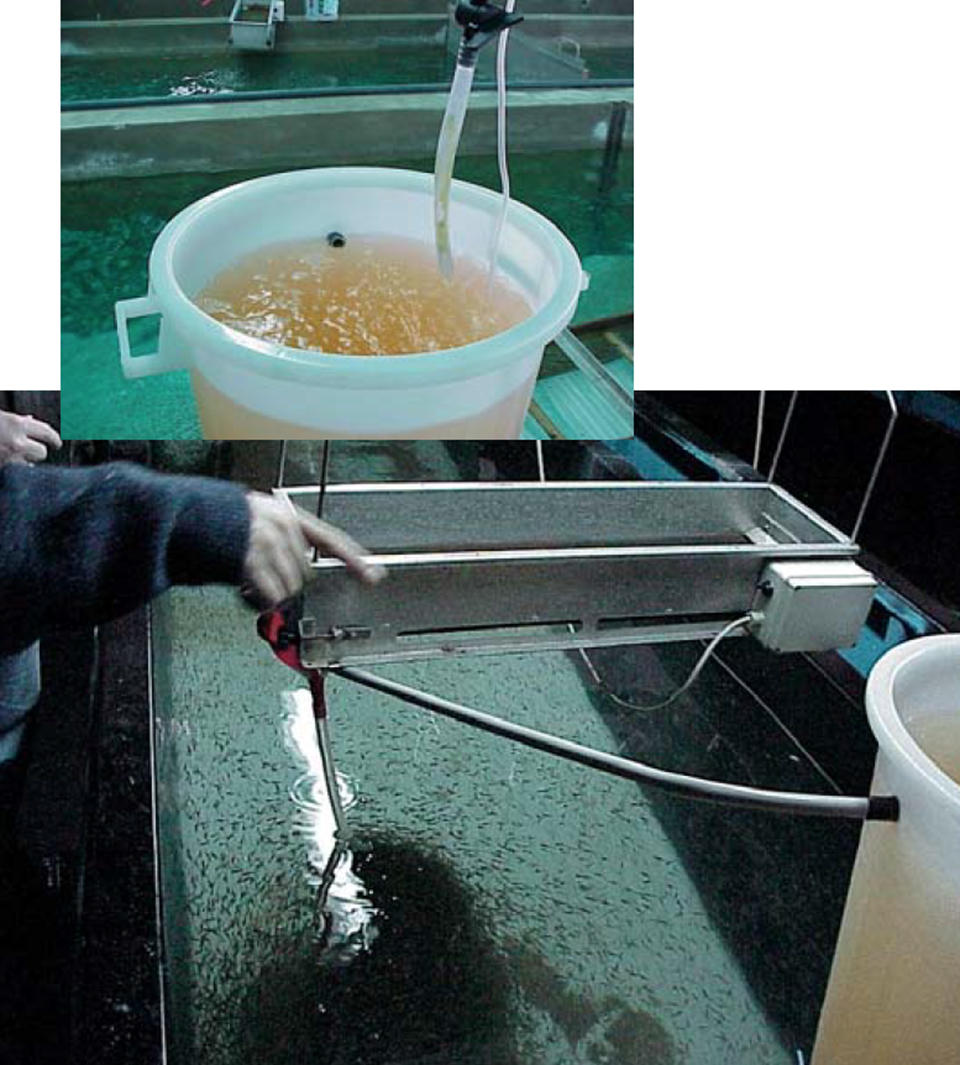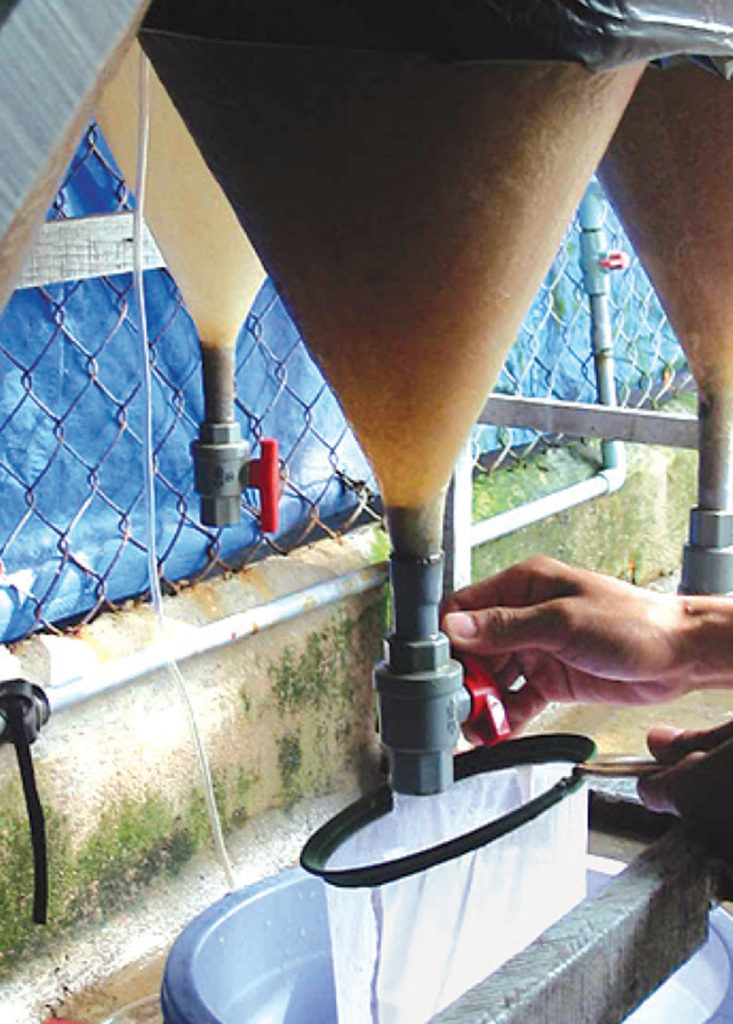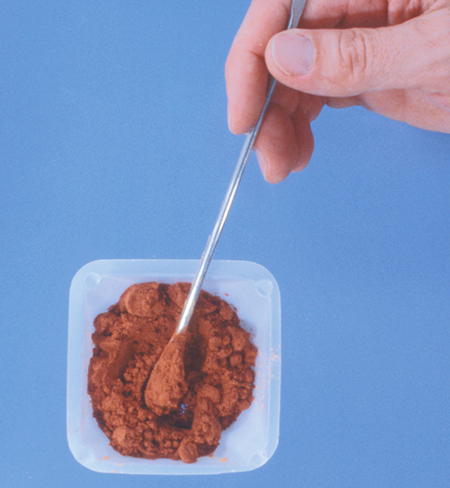Fed to bass, bream, the diet was water stable, palatable and digestible

The sea bass (Dicentrarchus labrax), sea bream (Sparus aurata) and sheephead bream (Diplodus puntazzo) are the main marine fish species reared in Italy. These fish have different first-feeding characteristics. Sea bass larvae have a large mouth and can be fed with small-size artemia, or with a combination of rotifers and artemia, while larvae of sea bream and sheephead bream have small mouths and must be fed with a combination of rotifers and artemia.
Worldwide, artemia cyst production continues to decline and years of shortage will continue. This has provided the impetus for development of replacement diets, including an innovative liquid larval diet for marine fish such as sea bass, sea bream and sheephead bream. This article describes initial feeding trials with a promising new liquid larval diet at five commercial fish hatcheries in Italy which routinely produce fry of sea bass, sea bream and sheephead bream. Most of the observations were made by hatchery technicians, who performed these trials using their standard rearing protocol.
Water stability
Water stability tests showed that the particles in the liquid diet were stable in the water for at least 48 hours. Hydrostability is important, because it reduces pollution, which reduces the risk of bacterial contamination in rearing tanks.
Palatability
Larvae were observed to be strongly attracted to the liquid diet, which included free amino acids and proteins from artemia. These potent attractants together with the soft particle texture may have contributed to its palatability. The high level of attractability and easy uptake of this diet were considered advantages in training larval fish to readily consume inert feeds from an early stage. This could allow for earlier weaning from live feeds and onto less costly dry diets.
Digestibility
Microscopic observation of larvae after feeding showed that the particles of liquid diet in the gut of the majority of individuals had been broken down into a digestible form. This indicates that the binders were functioning properly to hold the particles intact but not interfere with digestion. Only a small percentage of larvae were observed with particles passing through the digestive tract intact. Asimilar percentage of undigested particulate material was also observed for both rotifers and artemia. Additional studies are underway to determine the digestibility and assimilation efficacy of the liquid diet using tracers. Also under investigation is whether early larval stages need to consume live organisms to completely assimilate the liquid feed.
Nutritional composition
The proximate composition of the diet is listed in Table 1. The optimal protein: energy ratio of liquid diets for marine fish larvae needs further investigation. However, the liquid diet has three times the dry matter content of live feeds. Release of the energy contained within the liquid diet may depend on the particular species’ability to digest and assimilate such a concentrated feed particle.
Russiello, Typical proximate composition of a liquid diet, Table 1
| Nutrient | Percent Composition (DW basis) |
|---|---|
| Protein (minimum) | 56.0 |
| Lipids (minimum) | 18.5 |
| Fiber (maximum) | 1.0 |
| Ash (maximum) | 10.0 |
| DHA (minimum) | 1.6 |
| EPA (minimum) | 1.4 |
Feeding methods
As a starting point in estimating feeding rates for this new diet, we multiplied the quantity of rotifers or artemia needed times the following conversion factors for use of the liquid diet:
- 1.6 g of liquid diet per one million rotifers
- 17 g of liquid diet per one million newly hatched artemia.
Our observations have suggested that the feeding regime should be adapted to local conditions such as the rearing system, temperature, salinity, and fish density and species. During these commercial trials, the diet was administered to the rearing tanks in three ways:
- by pouring it directly in the water (4 to 5 times per day),
- by mixing it together with rotifers or artemia (worked best early in the rearing cycle), or
- by mixing it in a bucket and allowing it to pour into the tank drop by drop (worked best later in the rearing cycle). The third method seemed to yield the best overall results.
Particle size
Feed size must be appropriate for the larvae being fed (Table 2). For first-feeding sea bream and sheephead bream, a liquid diet with particles < 50 microns followed by a liquid diet with particles of 50 to 100 microns yielded best results, when combined with rotifers. For sea bass, it may be more convenient to start with a larger size diet (100 to 200 um) and initially combine it with artemia.
Russiello, Appropriately sized liquid diets, Table 2
| Particle Size | Live Feed Replacement |
|---|---|
| < 50 microns | Rotifers |
| 50-100 microns | Rotifers |
| 100-200 microns | Small artemia |
| 200-300 microns | artemia |
| 300-500 microns | artemia |
Live food substitution
An aggressive feeding protocol, using 100 percent liquid diet and no live feed, yielded poor results in terms of growth and survival. This is probably because it is necessary for the larvae to pass the critical phase of depletion of the yolk sack, with a high percentage of live feeds. This led us to study a dynamic protocol with the goal of helping the fish larvae pass the critical phase when the yolk has just been depleted and the larvae turns to exogenous nutrients. This is accomplished by ensuring that the larvae are fed a significant amount of live feed during the first few days of feeding, with a smaller amount of liquid diet being substituted for these live feeds. It is then recommended that greater amounts of live feed be substituted with liquid diet as the larvae continue to develop.
When using this liquid diet, artemia consumption by fish larvae can be reduced by 30 to 50 percent. With seabream and sheephead bream, we also achieved a significant reduction in rotifer consumption along with a reduction in additional costs such as manpower, enrichments, algae production, and energy. Initial trials showed no significant differences in growth and survival between the control groups and the larvae fed with 30 to 50 percent less rotifers and artemia.
Conclusions
A novel liquid diet was developed and tested for first-feeding marine fish larvae. The diet was water stable, palatable and digestible. It can be applied by pouring it directly into the tank, mixing it with either rotifers and/or artemia, or continually dripping in into the tank. Although the results of these initial trials can not be considered as definitive, they show promise in replacing a significant amount of live feeds used the culture of marine fish larvae. This diet has also been tested with marine shrimp with excellent results.
(Editor’s Note: This article was originally published in the February 2000 print edition of the Global Aquaculture Advocate.)
Now that you've reached the end of the article ...
… please consider supporting GSA’s mission to advance responsible seafood practices through education, advocacy and third-party assurances. The Advocate aims to document the evolution of responsible seafood practices and share the expansive knowledge of our vast network of contributors.
By becoming a Global Seafood Alliance member, you’re ensuring that all of the pre-competitive work we do through member benefits, resources and events can continue. Individual membership costs just $50 a year.
Not a GSA member? Join us.
Authors
-
Massimo Russiello
Salt Creek, Inc.
3528 West 500 South
Salt Lake City, UT 84104[109,111,99,46,107,114,99,116,108,97,115,45,97,64,115,111,116,105,117,113,114,97,109]
-
Mark Ingley
Salt Creek, Inc.
3528 West 500 South
Salt Lake City, UT 84104
Tagged With
Related Posts

Aquafeeds
Artemia replacement diets for penaeid shrimp
At shrimp hatcheries, artemia replacement diets are used to replace live artemia, but complete replacement in commercial conditions remains a challenge.

Health & Welfare
Experimental spawning, larval rearing of lane snapper test diets
As part of the development of rearing procedures at the first commercial marine fish hatchery in Venezuela, a study induced spawning of lane snappers and evaluated the survival of larvae fed rotifers, two microalgae species and enriched artemia.

Aquafeeds
Formulated diets: Replacement for live food in marine fish larvae
Creating formulated diets for fish larvae is difficult because estimating nutritional requirements cannot be done using traditional nutritional approaches.

Innovation & Investment
Artemia, the ‘magic powder’ fueling a multi-billion-dollar industry
Artemia, microscopic brine shrimp used as feed in hatcheries, are the unsung heroes of aquaculture. Experts say artemia is still inspiring innovation more than 50 years after initial commercialization. These creatures are much more than Sea-Monkeys.



